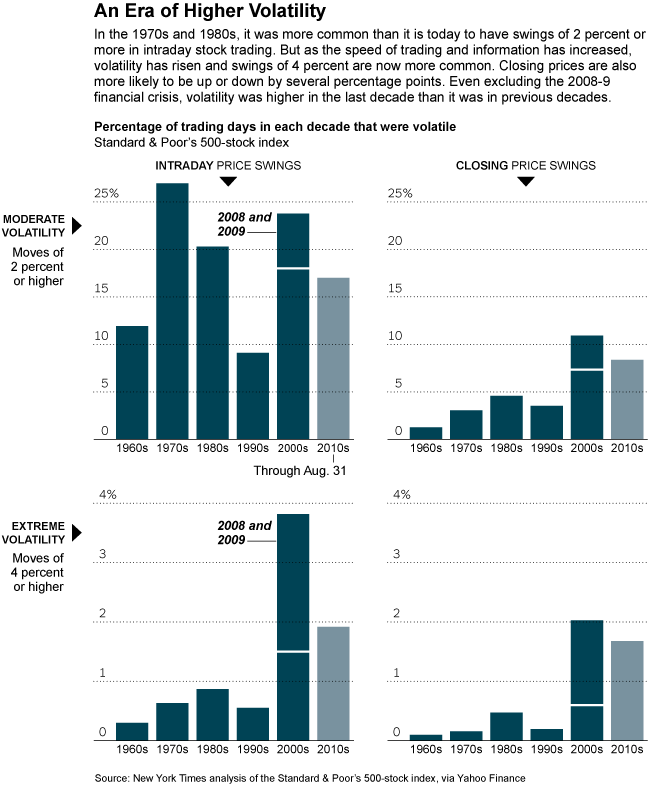“The stock market serves as a relocation center at which money is moved from the active to the patient.” Warren Buffett
The New York Times Sunday ran an article on stock market volatility. “The last few years have been the most volatile for all of recorded history,” said Andrew Lo, professor of finance at the M.I.T. Sloan School of Management. For evidence, he says that 10 of the biggest 20 daily upswings and 11 of the largest 20 daily drops since the beginning of 1980 to the end of last month have occurred in just the last three years”. The article goes on to say that high-frequency traders… ‘now account for up to 60 percent of daily turnover’ and probably help account for the large increase in the last several years over prior decades of what they term ‘extreme volatility’ – see the bottom of their chart below in reference to moves of 4% or higher:

Sometimes it seems the math ‘wizards’ on Wall Street, with their high frequency and program trading are lengthening the odds against the average investor – and that may be true when analyzed in extremely short time frames. But this volatility may actually be a gift in disguise for investors with any reasonable time frame beyond the next quarter’s report. The quantitative and computing brainpower continues to focus on ever shortening time horizons – not on identifying sustainable competitive advantages, long run earnings power or the lasting value of large and growing streams of dividend income. As Wall Street focuses ever more intently on short term movements, we believe this will ultimately create more opportunity for those investors whose time horizon reaches beyond a month, a day or an hour. The more these financial ‘wizards’ concentrate on the next few seconds, the less likely they are to identify the long term values that we diligently seek.
